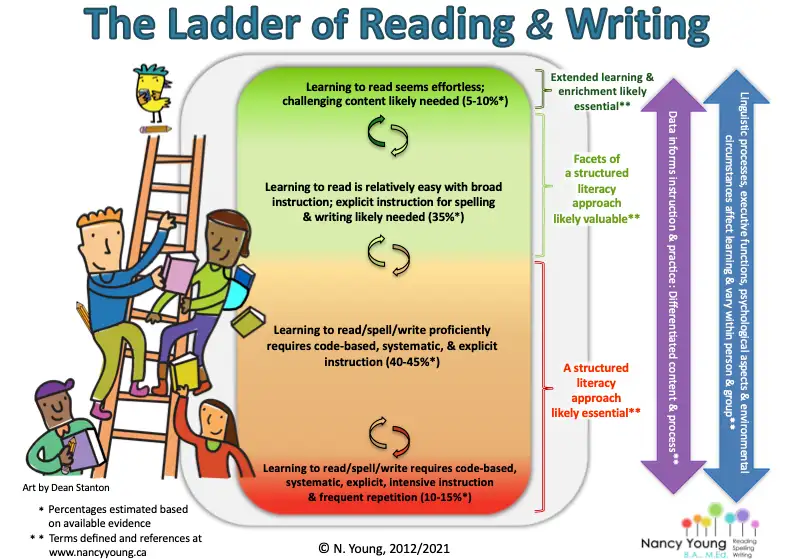Why RCF?
Once we know better, we must do better.
Mission & Vision
We make best-in-class literacy training, implementation support and educational events financially & geographically accessible, because every child deserves to feel empowered and have a teacher who can confidently teach them how to read.
Our vision at RCF is to end the literacy crisis and ensure ALL children, including the 1-in-5 with dyslexia, are afforded their fundamental right to literacy, identify their inherent strengths and are equipped with a strong foundation of confidence for life-long success.
%
Did you know that more than 66% of our Nation’s 4th graders cannot read at grade level?
Neither did we until our children became part of the statistics.
What is Dyslexia?
According to the International Dyslexia Association, dyslexia is “a specific learning disability that is neurobiological in origin. It is characterized by difficulties with accurate and/or fluent word recognition and by poor spelling and decoding abilities. These difficulties typically result from a deficit in the phonological component of language that is often unexpected in relation to other cognitive abilities and the provision of effective classroom instruction. Secondary consequences may include problems in reading comprehension and reduced reading experience that can impede growth of vocabulary and background knowledge.”
What is the Orton-Gillingham Approach?
According to the Academy of Orton-Gillingham Practitioners and Educators, the Orton-Gillingham Approach (also known as “OG”) is a direct, explicit, multi sensory, structured, sequential, diagnostic and prescriptive way to teach literacy when reading, writing and spelling does not come easily to individuals, such as those with dyslexia.
To learn more about OG, please visit the Academy of Orton-Gillingham Practitioners and Educators website.
To ensure that the standards set by the Academy of Orton Gillingham are being upheld, all training RCF hosts are overseen by an OGA Fellow or Fellow-in-Training.
What are Dyslexic Strengths?
While dyslexia does create difficulty in learning how to read, write and spell – dyslexia also comes with some incredible strengths.
While supporting reading remediation for dyslexic students is extremely important – equally important are identifying and acknowledging a dyslexic child’s strengths.
Common professions of successful dyslexics include: entrepreneurship, innovation, science, technology, sports, music, architecture, construction, design, advertising, culinary arts, marketing, artists, lawyers, film makers, writing, acting, and engineering – just to name a few.
Dyslexics make up some of the world’s greatest innovators, entrepreneurs, celebrities and millionaires and billionaires. With the proper academic and emotional support – the sky is truly the limit for dyslexic kiddos.
Some commonly recognized dyslexic strengths include, but are not limited to:
- strong memory for stories
- excellent problem solving skills
- tremendous spatial reasoning (three-dimensional thinkers)
- incredibly creative and imaginative
- high levels of empathy
- brilliant conversationalists
- excellent big-picture thinkers
- great at connections between seemingly unrelated things
- excellent abstract thinkers
- gifted at thinking “outside the box”
- strong critical thinkers
- uniquely observant
What is “Structured Literacy”?
The International Dyslexia Association explains that Structured Literacy is considered the most effective approach to teach reading, writing and spelling to students who experience unusual difficulty learning to read and spell words, including dyslexic students.
The term includes teaching students phoneme awareness (individual speech sounds that make up words), sound-symbol correspondence, patterns and conventions of print, morphology (the meaning of language), syntax (system for ordering words in sentences so meaning is communicated) and semantics (meaning).
Because OG is considered a form of Structured Literacy, Structured Literacy also follows the same principles and methods of OG, including:
- explicit
- systematic
- cumulative
- multi-sensory
- diagnostic
- responsive instruction
What is meant by the term the “science of reading”?
The National Council on Teacher Quality refers to the science of reading as explicit, systematic instruction that encompasses all five essential components of early reading instruction, which are:
- phonemic awareness
- phonics
- fluency
- vocabulary
- reading comprehension.
Stay in Touch
To keep connected with the REED Charitable Foundation and everything we're doing, join our email list! Click the button to join now.

